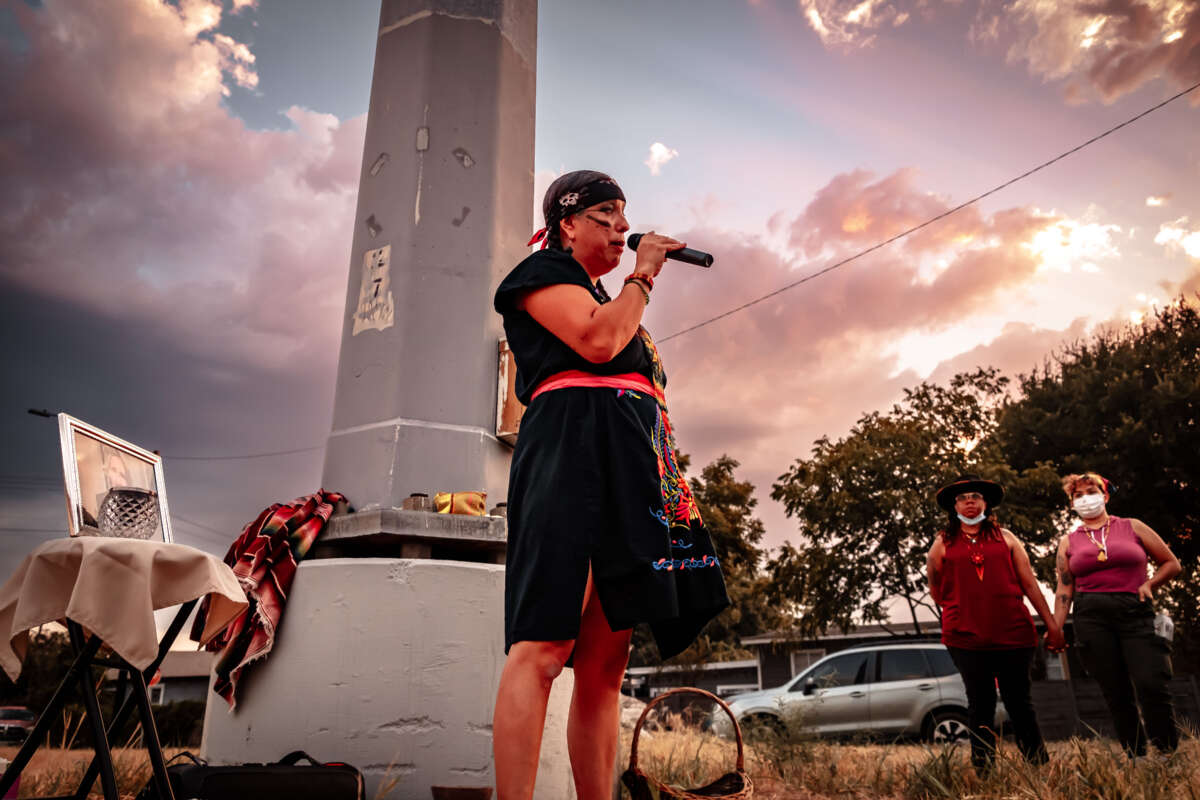Throughout the blazing summer of 2023, reporters dutifully marked prior heat records being demolished repeatedly across the nation. New record-setting high temperatures were noted almost daily, and in city after city, a raft of new hottest June, July and August monthlong records were marked in towering fonts. Far fewer stories, however, sought to document what that extreme heat meant for working people.
“I’m surprised I lived through it,” said Mark Moutos, 65, leaning back against shaded concrete beneath a dusty highway off-ramp on San Antonio’s west side. “I kept thinking, ‘I’m getting older; maybe I just don’t handle the heat as well.’”
Today we know that the Earth has just experienced its hottest summer in more than 125,000 years — a crisis being driven by the rampant release of heat-trapping gases through the burning of fossil fuels. In Texas, 2023 now ranks as the state’s second-hottest year, just a degree-average behind 2011. But in many parts of the state — including San Antonio — it was the hottest summer since record keeping began. Meteorologists here also marked the most triple-digit days and the most 105-plus degree days, according to Spectrum News. And with just two inches of rainfall, it was the city’s third-driest summer.
Moutos, who has been living unhoused since leaving a job at a car dealership years ago, said he drank as much water as he could, but that making the trips to the corner store to collect fluids and food became increasingly arduous beneath this summer’s punishing heat dome. He passed out twice on the sidewalk near his camp, he said, and had to be revived by EMS teams.
“I wasn’t doing anything. I was just walking back over to here and boom! I hit the sidewalk,” he said. “Fortunately, there were friends nearby who saw what happened.”
His former campmate, Albert Garcia, who has been using a wheelchair since losing both feet and part of one leg while living unhoused in San Antonio during Winter Storm Uri in 2021, didn’t fare so well. He was found dead beneath the highway off-ramp on San Antonio’s west side on August 12, 2023.

Moutos said Garcia never complained about the heat, though.
“He would just sit there and sweat,” Moutos said. “He would just pass out right here in the dirt.”
The case of a U.S. postal worker in Dallas succumbing to the heat in June was widely reported and led to inquiries by state and federal lawmakers. Garcia’s death, meanwhile, has yet to capture headlines even in his hometown. A TV reporter who covered the story told me his station’s news editor complained the story was still “thin” due to the fact that the Bexar County medical examiner had yet to release a cause of death in the case. Information provided by Bexar County and the San Antonio Metropolitan Health District to me for this copublished Truthout/Deceleration story suggests that while heat may be referenced in the autopsy narrative, it won’t be listed as a cause of death for Garcia or for any other deaths in the county this summer.
That’s not because the heat hasn’t been deadly. Rather, it’s due to the fact that Bexar County Medical Examiner Kimberley Molina doesn’t believe she has the resources to make such declarations.
“She said: ‘I’m simply not comfortable saying that,’” said Tom Peine, a Bexar County public information officer speaking on Molina’s behalf, in an interview conducted for this article. “‘Because if I stay strictly scientific, I cannot say this was hyperthermia unless I was right there or I was there within a half hour.’”
The department has been so understaffed and overwhelmed with cases that Molina recently described her department to the Bexar County Commissioners Court as “one forensic pathologist away from collapse.” As Texas Public Radio has reported, commissioners approved an additional $628,000 last September for the department — which handled both the Uvalde school shooting in 2021 that left 21 dead, as well as the death of 53 migrants abandoned in an overheated semi-trailer on San Antonio’s south side.
High temperatures and humidity, the same conditions that contribute to public health impacts — particularly among outdoor workers and the unhoused community — complicate autopsies by accelerating decomposition of many of the bodies the office receives, Peine added.
Moutos, who has been living unhoused since leaving a job at a car dealership years ago … passed out twice on the sidewalk near his camp … and had to be revived by EMS teams.
“The body arrives there, it’s potentially hours ago that the person passed. Or days. Or weeks. At that point, it’s difficult to say [how heat was a factor],” said Peine. “So they don’t know what the temperature was at that moment. They obviously document at the time of the autopsy everything that they find.”
This yawning gap in public health knowledge is common in communities across the county, the Associated Press recently reported. And it is putting lives at risk even as those risks rise exponentially due to accelerated climate chaos. Heat is the leading cause of weather-related deaths in the United States.
“Essentially, all heat related deaths are preventable,” Kristie L. Ebi, an epidemiologist, told the Associated Press. “People don’t need to die from the heat.” With a better count, she said, “You can start developing much better heat wave early warning systems and target people who are at higher risk and make sure that they’re aware of these risks.”
The failure of the Bexar County medical examiner to properly communicate heat’s role in local deaths is important, in large part, as it is the medical examiner’s office that supplies the death data used by San Antonio’s Metropolitan Health District in its heat surveillance program. While Metro Health reported in 2023 a sizable spike in heat strokes and heat illness over previous years, the column representing heat-related deaths is populated only by a long line of repeating letters: “N/A.”
N/A here stands not for “not applicable,” but “not available.”
“We say it’s N/A, not available. Not necessarily that it’s zero,” said Rita Espinoza, Metro Health’s chief epidemiologist in charge of heat surveillance.
It is only within an almost perfect confluence of conditions that a death will be categorized as heat-related in San Antonio.
“Typically, it will happen if the individual is taken to an emergency room and a physician has seen it and the core body temperature is taken immediately and it’s on record that, yes, this is a heat-related issue,” Espinoza said.
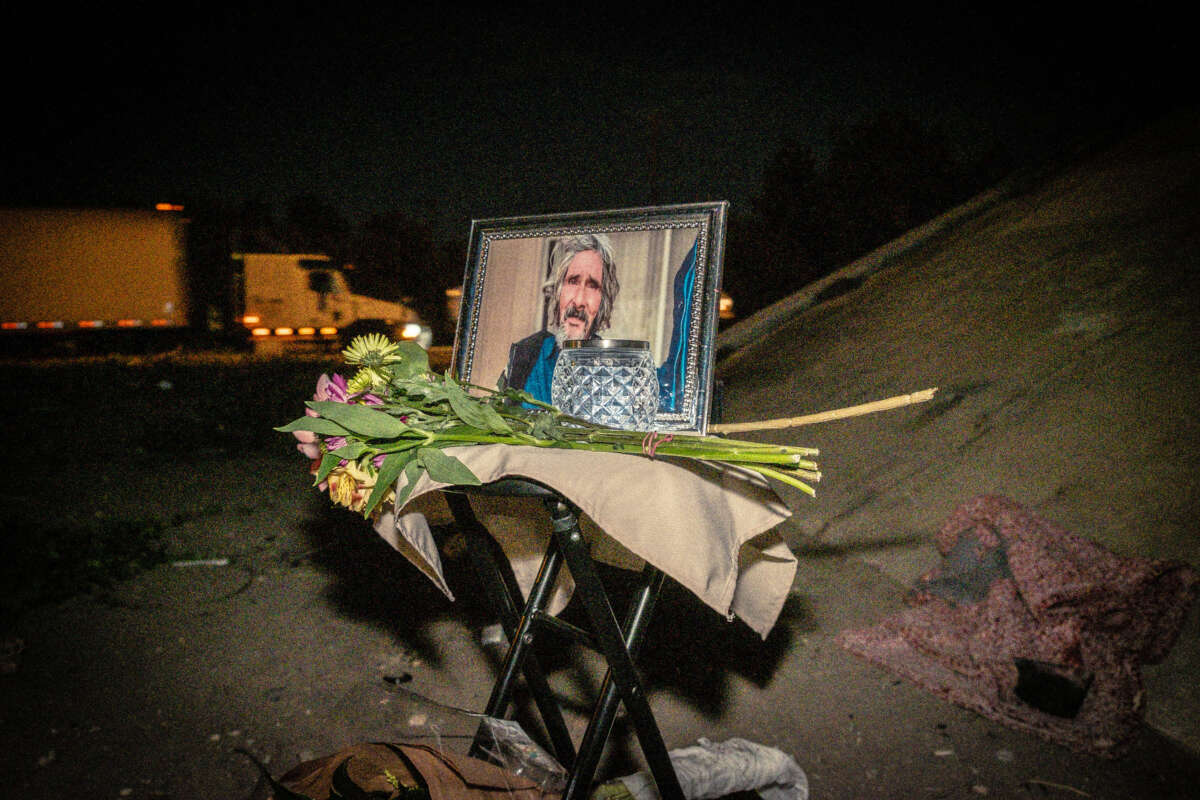
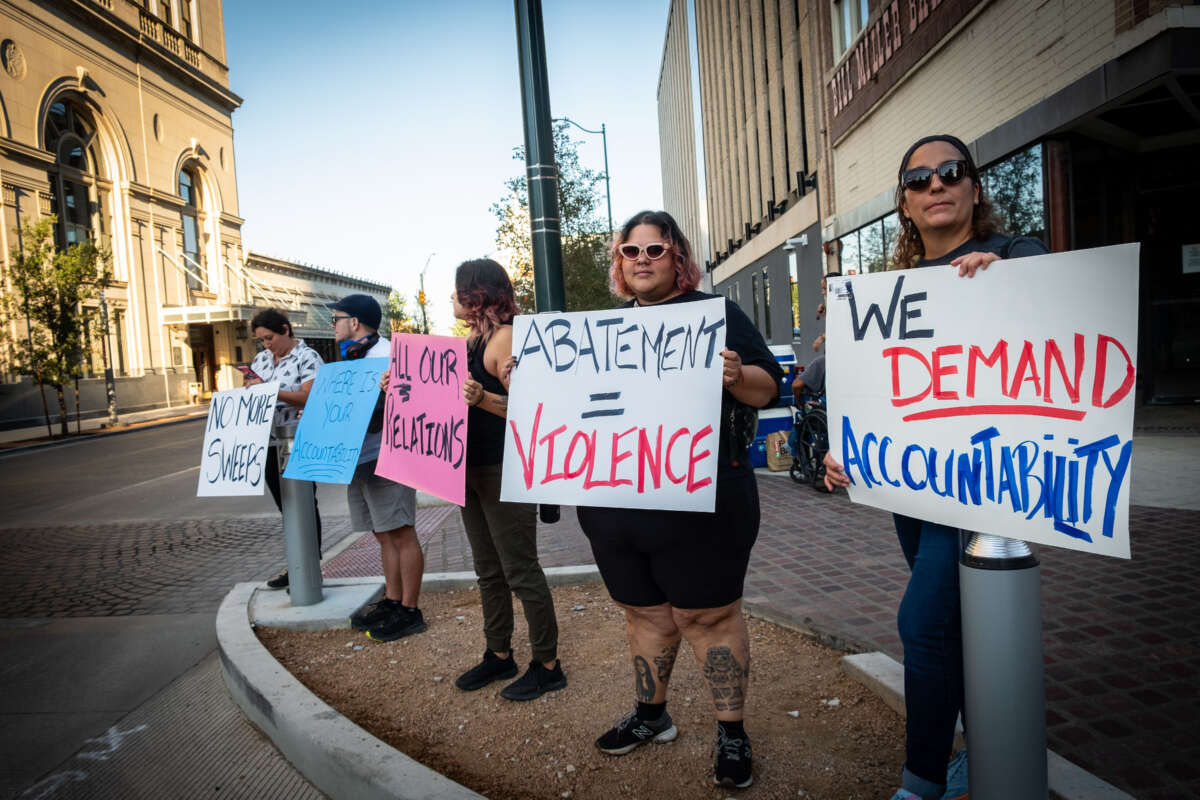
Between 2018 and 2023, the years in which Metro Health has posted its data publicly, there has been only one heat-related death listed. That was likely the outdoor worker Gabriel Infante, who OSHA reported was picked up by EMS and died the next day at a hospital in 2022.
While the medical examiner’s office doesn’t list any deaths as primarily heat-related, Metro Health also does not review the individual autopsy reports as they are released to read the small print. Rather, Espinoza’s team reviews a monthly “death list” and the codes within it. Deceleration has requested copies of this summer’s death lists to better understand how heat is reflected there; however, those documents have yet to be released.
“Essentially, all heat related deaths are preventable. People don’t need to die from the heat.”
Metro Health officials confirmed, however, that Espinoza has not requested any individual autopsies from the medical examiner this year to review based upon the abbreviated data contained in the monthly death lists.
Espinoza said that Metro Health is not attempting to list every heat-related illness or death, only to demonstrate trends over time to better communicate risk. The office relies almost exclusively on EMS reports to the exclusion of other types of data. Therefore, the numbers are understood as undercounts across the board. The trend, however, is definitely headed in a bad direction.
In 2023, the office reported 758 cases of heat exhaustion and 23 cases of heatstroke. In 2022, the department listed 489 cases of heat exhaustion and 14 cases of heatstroke. That’s up from 310 cases of heat exhaustion in 2020 and zero cases of heatstroke. In 2018, the first year that data was made publicly available, there were 218 cases of heat exhaustion listed and zero cases of heatstroke recorded.
“We’re not looking at the absolute number,” Espinoza said. “We’re not saying there’s only 200 heat-related illnesses. We’re just saying from the previous weeks we’ve seen an increase.… Individuals may have a heat-related illness and maybe they go inside real quick to cool down so they don’t need to get medical services. So, we can’t say how much there is underreporting.”
The fact of this reliance on limited datasets is not typically included in media reports on those numbers, however.
San Antonio’s practices are not the only way of understanding heat’s toll on public health. Temperatures in Phoenix, Arizona, for example, averaged about 10 degrees hotter than San Antonio’s over the summer of 2023. But the number of heat-related deaths being reported by the Phoenix medical examiner eclipse what San Antonio’s Metro Health has reported.
Inside Climate News reported from Phoenix: “For 54 days straight — 36 more than the previous record — the hottest city in the country had high temperatures of 110 degrees Fahrenheit or higher. That heat led to nearly 300 confirmed deaths so far, with more under investigation by the county, mostly among the unhoused population.”
Of course, observing, recording and understanding how heat deaths occur is the only way that communities can truly begin to interrupt and reduce those impacts.
At a recent climate conference at Texas State University in San Marcos, Texas, Dallas-based medical anthropologist Rose Jones said the research community reports a broad range of annual heat deaths in the United States. “If you look at the data, what you are going to find is at the low end, 702 Americans die every year from heat-related illness, to up to 10,000,” said Jones. “I’m pretty confident that the 10,000 number is more accurate and in itself, many experts would probably agree, is likely an underestimate.”
That undercount threatens the lives of those living most directly exposed to the rising heat, she later told Deceleration.
“Medicine prides itself on being evidenced-based medicine. And that’s true for many of the disorders we address, but not for heat. And that’s not acceptable,” Jones said. “This summer is a harbinger of where we’re going. So this is not a problem that is going to go away. It’s totally unacceptable that we don’t have basic data for knowing how many people are getting sick and how many people are dying. This has to be fixed.”
When asked about Phoenix’s approach, Peine said in Bexar County, decisions to attribute heat deaths fall to the individual medical examiners — and that the way the work is done in the county isn’t likely to change without an outside push.
Remarkably, even after this unprecedented summer in San Antonio, understanding the extreme heat’s impact on people has not been a priority of elected leaders. Neither the state, nor the county, nor the city has requested a survey of heat impacts on mortality in Bexar County, Peine said. If they did, Molina’s office would, firstly, need additional funds to staff up to even begin to respond.
Even after this unprecedented summer in San Antonio, understanding the extreme heat’s impact on people has not been a priority of elected leaders.
There have been no special committees or task forces empaneled to understand the full impact of the summer heat as there were after the 2021 winter storm that claimed around 16 lives in Bexar County, and 246 across the state, according to the Texas Department of State Health Services. By calculating excess deaths during the storm, Buzzfeed News found hundreds more likely perished during the peak of the storm than the state has admitted. However, heat is still the dominant threat to public health in the state.
The Texas Tribune reported “at least” 279 heat-related deaths in Texas during 2022. And another 200 the year before that. While members of the disability community sued the city of San Antonio for failing to inform, prepare or provide safe spaces for those with special needs during the winter storm, it may just be a matter of time before a similar lawsuit is brought with similar claims during periods of increasingly violent heat.
Nicole Healy, the chief medical examiner at the Bexar County Medical Examiner’s Office, said heat is a factor the office is exploring in Garcia’s case, but that autopsies are taking around four months on average to complete due to staffing issues.
“Unfortunately, with unhoused individuals that have been passing away, we are aware of that [heat]. That’s part of what our doctors will take into consideration with autopsy findings and blood work and also the circumstances of how they were found,” Healy said.
Espinoza says that she hopes the trend in heat illness, even without a more robust and accurate accounting, will motivate changes in behavior.
“It was a hot summer and we did definitely see increases in the heat-related illnesses overall compared with last year,” Espinoza said. “We are concerned that the National Service Center has said this is going to be the norm or be worse from here on out. So I think it will be more important to get the word out early about prevention and care, and what to do and not to do.”
Recent projections suggest that, under current emission scenarios, the number of people in the United States exposed to temperatures above the threshold of the National Weather Service’s “extreme danger” category of a heat index over 125 degrees Fahrenheit (125°F) is expected to increase from 8 million to 107 million by mid-century. Meanwhile the number of days over 100°F in parts of the country, including Texas, is on track to rise from the 10 to 20 count of recent decades to over 100 days by 2100.
It’s possible that improvements in communication and outreach could have saved Garcia’s life. Moutos, for instance, only came to understand how extreme this summer’s heat was when informed of the heat statistics in an interview for this piece.
For his part, Moutos blames the heat for Garcia’s death.
“This summer really was tough on him,” he said.
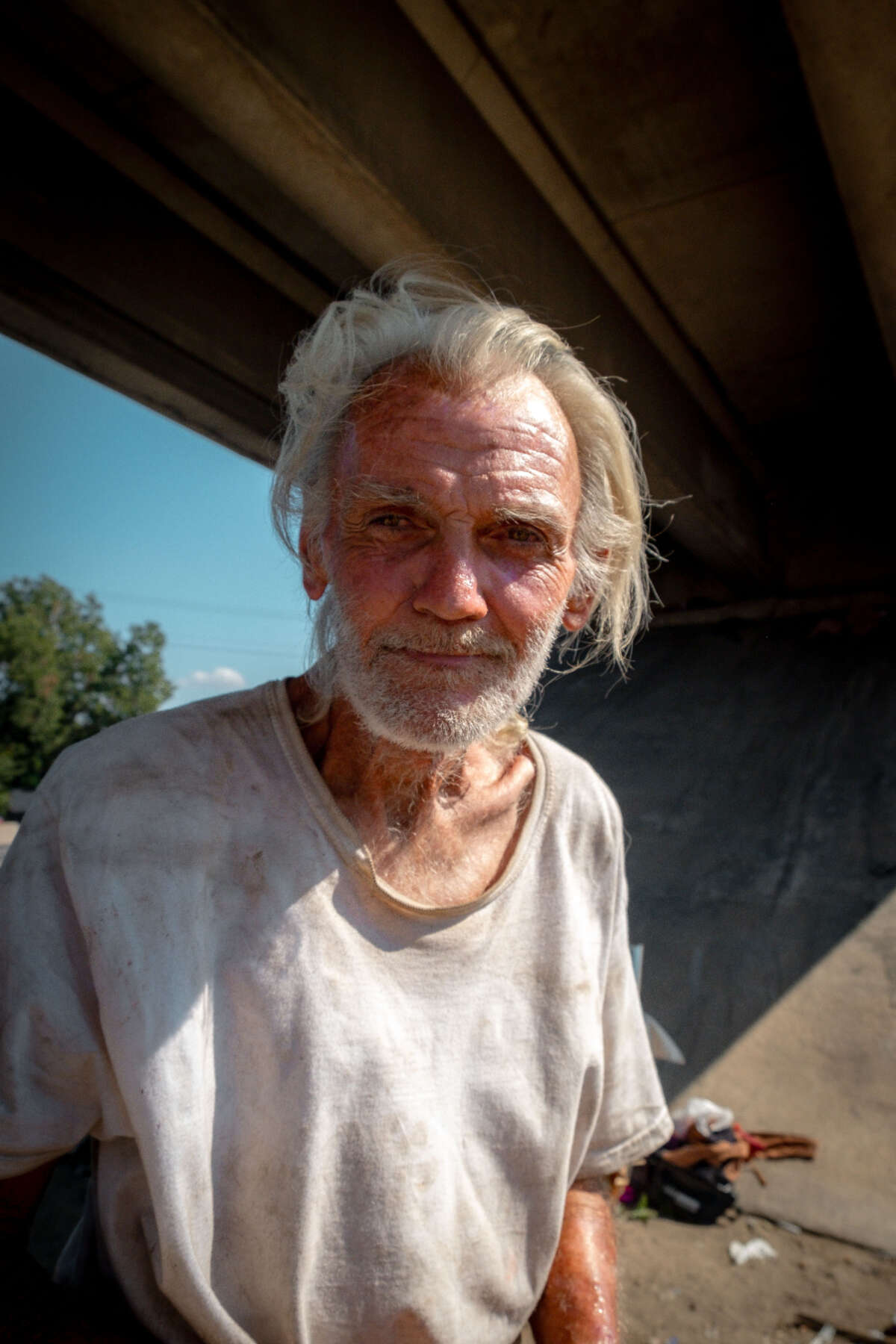
The tragedy of Garcia’s death is compounded by the fact that he had been living sober in a group home for a year and a half after a year-long effort was made by a team of volunteers to get him off the streets. He left that home on July 18, 2023, alleging abuse by the home manager. He returned to the streets in what he had no way of knowing would be the hottest summer he would ever experience.
“Albert is unwilling to return to his current residence but is willing to move into a new home,” a social worker reported by email on July 20. “Albert has been sober since December 1, 2021, but the longer he remains in this spot, the more likely he will be to relapse.”
Houseless advocates blame city and state agencies for failing to intervene in Garcia’s case more quickly to return him to safe housing.
“They dropped the ball from the get-go,” said Maria Turvin, executive director of Yanawana Herbolarios, who leads a team of street medics assisting the unhoused population. “They were alerted as soon as Albert was back on the street.”
According to emails secured under open-records law for this copublished Truthout/Deceleration story, Garcia only returned to the streets because of what he described as an abusive caregiver, who he said pulled a knife on another housemate and regularly made group home residents perform menial tasks such as scrubbing the walls of the home.

After enduring nearly a month of triple-digit temperatures, Garcia died in the night sleeping on the ground at the age of 56. It is unclear how many hours passed between his death and collection by EMS. Deceleration checked the campsite in the days following his death, finding temperatures there were regularly 10 degrees hotter than they were being reported at San Antonio International Airport — hovering regularly around 113 to 115°F.
“Albert is not my first client with APS [Adult Protective Services],” said Turvin. “They straight out fight you for having to take any kind of care for our houseless relatives. APS is 100 percent complicit in Albert Garcia’s death.”
A vigil in early September at the site of Garcia’s death and two direct actions intended to hold the agencies responsible were organized to memorialize Garcia and all victims of the climate crisis and opioid crisis in San Antonio. On Wednesday, October 18, more than two months after his death, Garcia was buried in a pauper’s grave, stacked atop others, at First Memorial Park Cemetery.
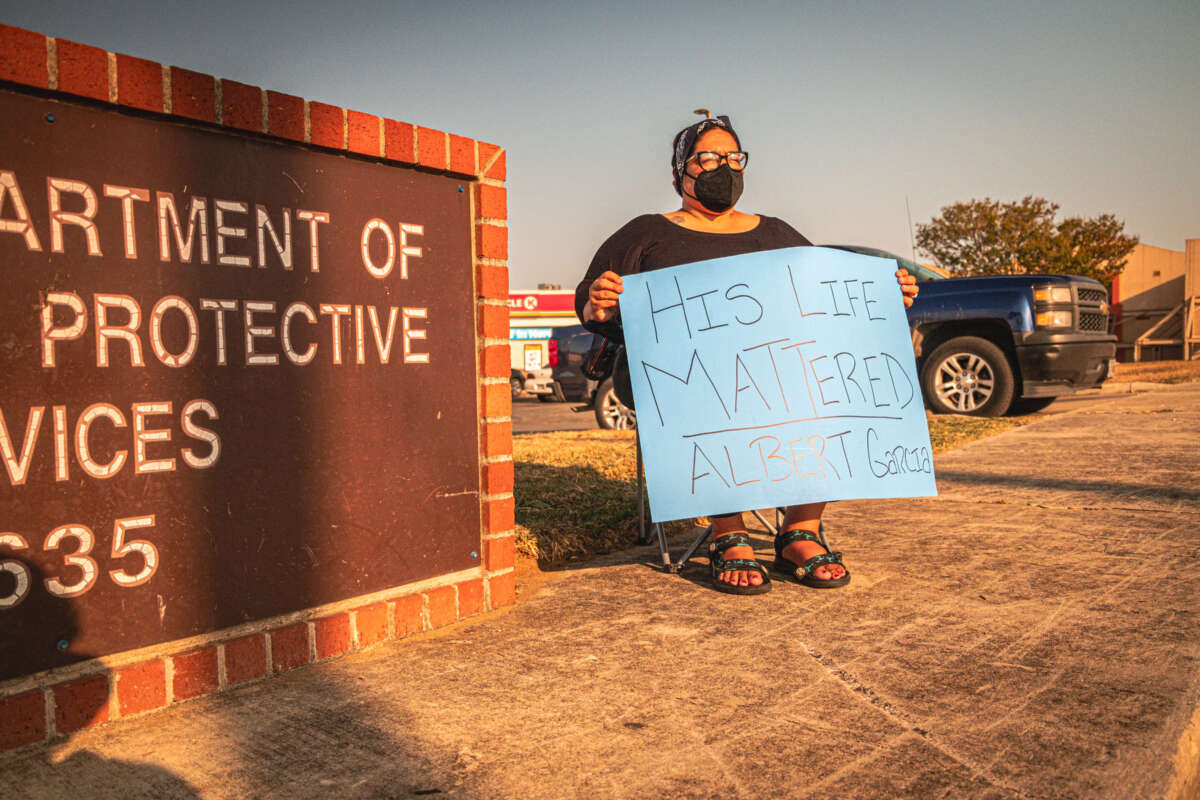
Our most important fundraising appeal of the year
December is the most critical time of year for Truthout, because our nonprofit news is funded almost entirely by individual donations from readers like you. So before you navigate away, we ask that you take just a second to support Truthout with a tax-deductible donation.
This year is a little different. We are up against a far-reaching, wide-scale attack on press freedom coming from the Trump administration. 2025 was a year of frightening censorship, news industry corporate consolidation, and worsening financial conditions for progressive nonprofits across the board.
We can only resist Trump’s agenda by cultivating a strong base of support. The right-wing mediasphere is funded comfortably by billionaire owners and venture capitalist philanthropists. At Truthout, we have you.
We’ve set an ambitious target for our year-end campaign — a goal of $250,000 to keep up our fight against authoritarianism in 2026. Please take a meaningful action in this fight: make a one-time or monthly donation to Truthout before December 31. If you have the means, please dig deep.
